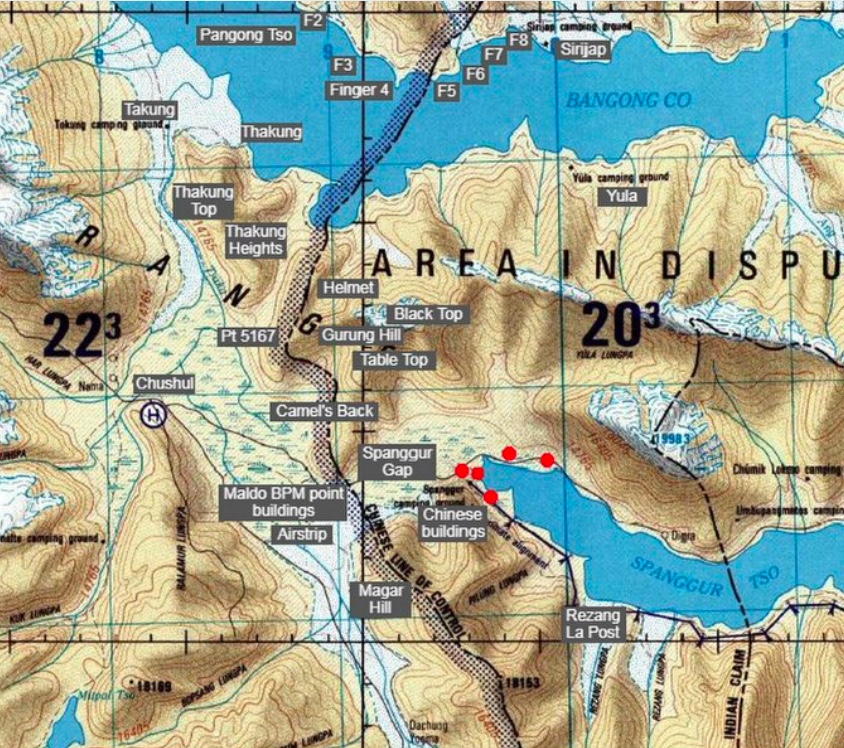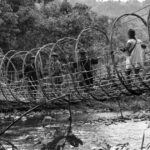
SOURCE: Ajai Shukla / Business Standard
With Indian and Chinese troops in Eastern Ladakh facing the prospect of winter in deep sub-zero temperatures, howling winds and low oxygen levels, New Delhi and Beijing are discussing a disengagement plan that might allow soldiers on the 16,000-foot heights around Pangong Tso lake to withdraw to easier locations.
Government sources say Beijing is pressuring New Delhi to accept what would be publicly called a “mutual troop withdrawal”, but would, in fact, require Indian soldiers to withdraw first from their tactically advantageous positions south of Pangong Tso lake.
Only after Indian troops withdraw from their dominating heights, such as Point 5167, Bump, Magar Hill and Requin La; would the People’s Liberation Army (PLA) pull back from its positions on Helmet Top and Black Top in the same area.
It is learnt that Chinese negotiators, mindful of New Delhi’s sensitivity to public opinion, are assuring Indian officials that the Indian side would be allowed to announce first that the Chinese had pulled back. Beijing is offering assurances that it will not counter such a claim from New Delhi.
Chinese negotiators are offering a similar plan for a “mutual withdrawal” from the heights above the so-called Fingers – mountain spurs that run down to the north bank of Pangong Tso. Here again, India is being asked to withdraw first from positions above Finger 2 and Finger 3.
Only after India withdraws to the area of Finger 2, would the PLA withdraw from the Finger 3 top to the area of Finger 4.
Even after such a withdrawal, the Chinese would be in occupation of the territory up to Finger 4. That means the Line of Actual Control (LAC) would have been moved eight kilometres westwards from the pre-April LAC at Finger 8.
China wants to discuss this proposal in the 8th round of senior military commanders’ talks that are expected to be held next month in Ladakh.
Indian negotiators, including officers from the Leh-based 4 Corps as well as officials from the Ministry of External Affairs, are wary of the pitfalls in the Chinese proposal – which they term a “Doklam-type solution.”
In 2017, during a border face-off between Indian troops and the PLA in Doklam, Bhutan, the government of India accepted a similar “mutual troop withdrawal”, which actually required Indian troops to withdraw first.
However, the PLA did not keep its end of the bargain. Chinese troops withdrew only partially from Doklam and then re-entered the disputed area in greater numbers once public attention had turned away from that face-off.
In case New Delhi does not accept a mutual withdrawal on its terms, the PLA has begun strengthening its defences in the areas where it has trespassed. According to sources, PLA troops have been observed reinforcing their over-ground defences by constructing underground tunnels and bunkers. Major construction work has been observed across the front, especially in the Pangong south bank area.
Another worrying factor for Indian negotiators is that the Chinese are refusing to discuss any withdrawal in the Depsang area, where the PLA is ensconced 15-18 kilometres inside the LAC.
Government sources say there is apprehension in New Delhi that Depsang was China’s primary objective in the multiple intrusions. Having reached its claim line here, Beijing is willing to talk about other sectors, but not Depsang.
In the seven rounds of military-to-military talks held so far, China has resisted including the Depsang intrusions in the agenda. Nor has New Delhi insisted on discussing Depsang.
The Indian Army did not deny a query from Business Standard asking whether “the government is considering a package proposal for a mutual troop withdrawal from the south bank of Pangong Tso, which involves Indian troops withdrawing first from the heights they hold.”
“There is nothing that can be shared with you at this moment,” responded an army spokesperson.
Foreign Minister S Jaishankar had admitted on October 15 that New Delhi and Beijing were engaged in talks to resolve the situation. “Discussions are on; what is going on is something confidential between us and the Chinese,” he said.
The army did not comment either on whether India was insisting on discussing troop withdrawals from the Depsang sector.






